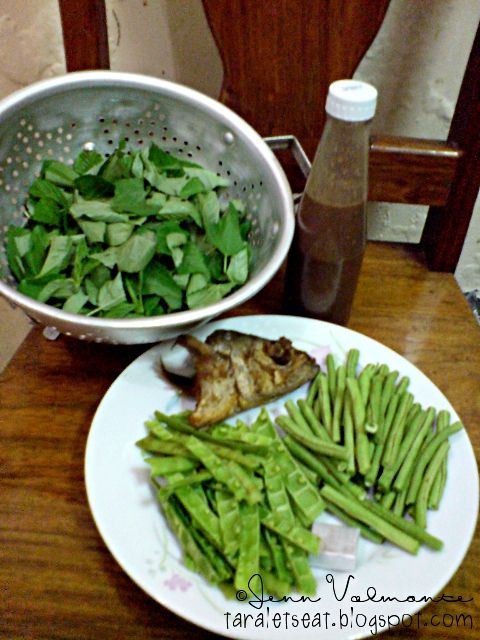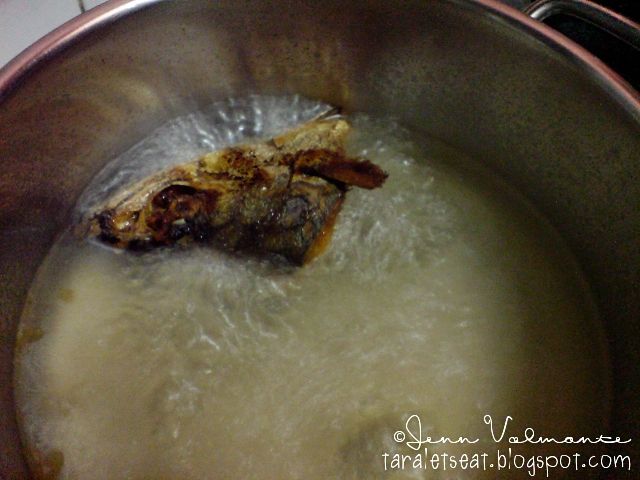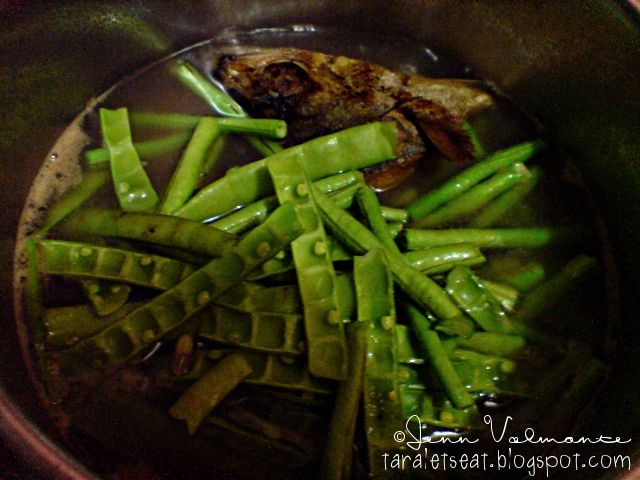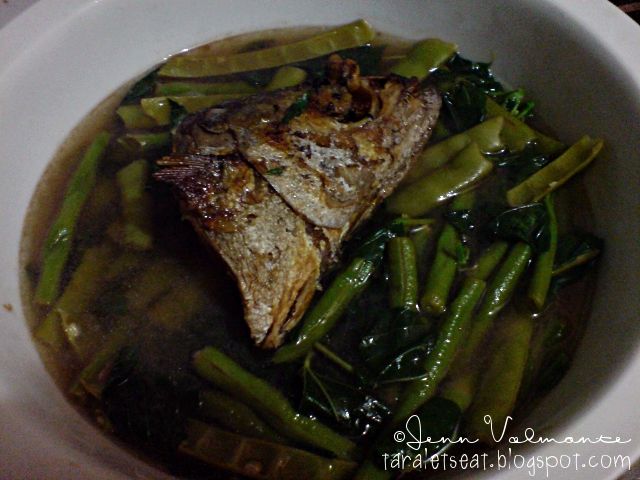As a daughter of an Ilocano man, I grew up eating Dinengdeng, which is simply boiled vegetable soup seasoned with fried or grilled fish and bagoong. There are so many mix of vegetables for this dish, but personally, my favorite vegetables for this dish include - bamboo shoots, malunggay fruit, squash flowers, and jicama fruit, which is the star of this Dinengdeng dish I am about to share.
Typically, whenever I share recipes, I'd list the ingredients and how the dish is cooked, but for today, I will share a step-by-step guide.

Prepare the ingredients. For this dish, I used jicama fruit (singkamas) - split in half, string beans, saluyot leaves (jute), fried fish, and tamarind cube.
This recipe actually calls for fresh tamarind or fresh kamias (bilimbi) to give the sour flavor to the broth, but because the nearby market didn't have tamarind and our bilimbi tree doesn't have fruits yet, I just made use of the tamarind cube we have. The sour agent isn't always present in many Dinengdeng dishes, but some dishes with jicama fruit have it.
As for the fish, you can use (like I say) fried or grilled fish, and you can add as much as you want. In our household, us siblings prefer "dry" fish and mom prefers her fish "wet," so we only add one piece of fish for mom. You can also use leftover fish or cook a fresh one, like we did for this dish.

#1. Fill up a pot with water depending on the amount of vegetables you're cooking. Some cooks save up the water they used in cleaning rice before cooking it, but I wasn't able to ask brother to save the rice washing (as they call it), so I just used regular water.
Allow the water to boil and add in bagoong. There is no specific amount of bagoong to put, so you have to go with gut-feel. I added about three tablespoons of bagoong for this one. If what you have at home isn't the boneless kind and you can see pieces of anchovies in the bottle, scoop out some bagoong in a small bowl and add boiling water (from the pot) and crush the anchovies. Pour the water back to the pot, making sure you strained in the process (you didn't want to have some anchovy bones in your dish). Boil for a few more minutes.

#2. Add the jicama fruits and sitaw and stir lightly.
As the broth boils, you will see some bubbles and oil floating, just scoop it out. Cover the pot. When the vegetables are half-cooked, drop half of the tamarind cube.
If you're using fresh tamarind or kamias, boil them at the start of your cooking, but take out the sour fruit before adding the vegetables. At this point (if you use fresh sour fruits), do what you did to the bagoong - add broth and crush the fruits and pour back the broth to the pot (making sure you strained it as well).

#3. Add the saluyot leaves and stir.
If you're going to serve this right away, simmer the dish for three minutes and serve it. If you're not going to serve it right away, then turn off the heat at this point, cover the pot and allow the residual heat to cook the leaves.

I don't know what other vegetables one can use for this particular dish, but here at home, these are the usual combinations.















 I come from a family who loves cooking and eating. I never had any formal training in cooking and that I taught myself how to cook based on the handed down recipes, but I could say that I can cook good food. In 2008, I started documenting my food trips for my
I come from a family who loves cooking and eating. I never had any formal training in cooking and that I taught myself how to cook based on the handed down recipes, but I could say that I can cook good food. In 2008, I started documenting my food trips for my